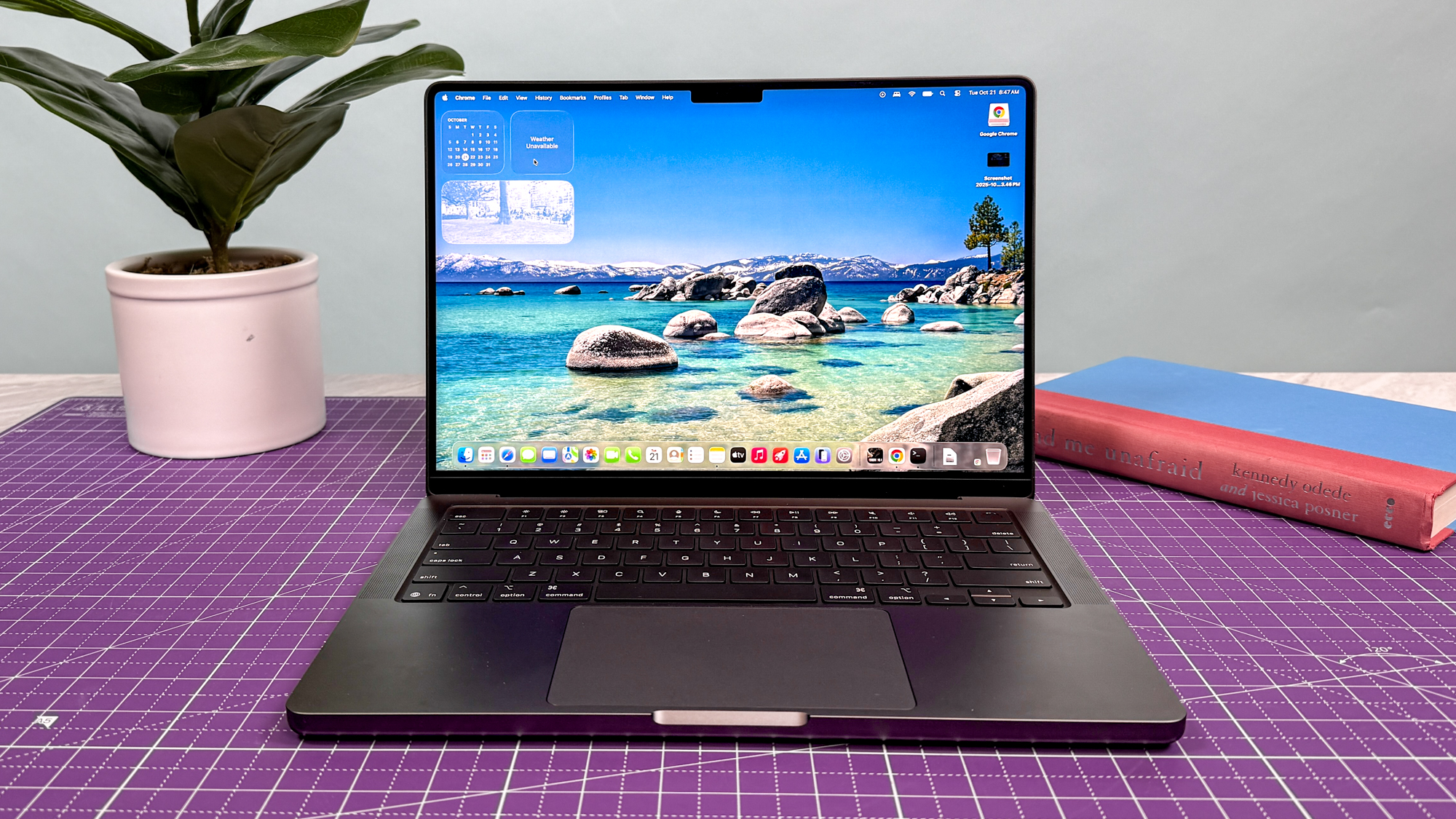Samsung Galaxy Fit Hands-On Review: $100 Fitbit Rival Sports Stunning Display
Samsung's new fitness tracker takes aim at Fitbit's $100 Inspire HR with accurate workout-tracking in a lightweight package.
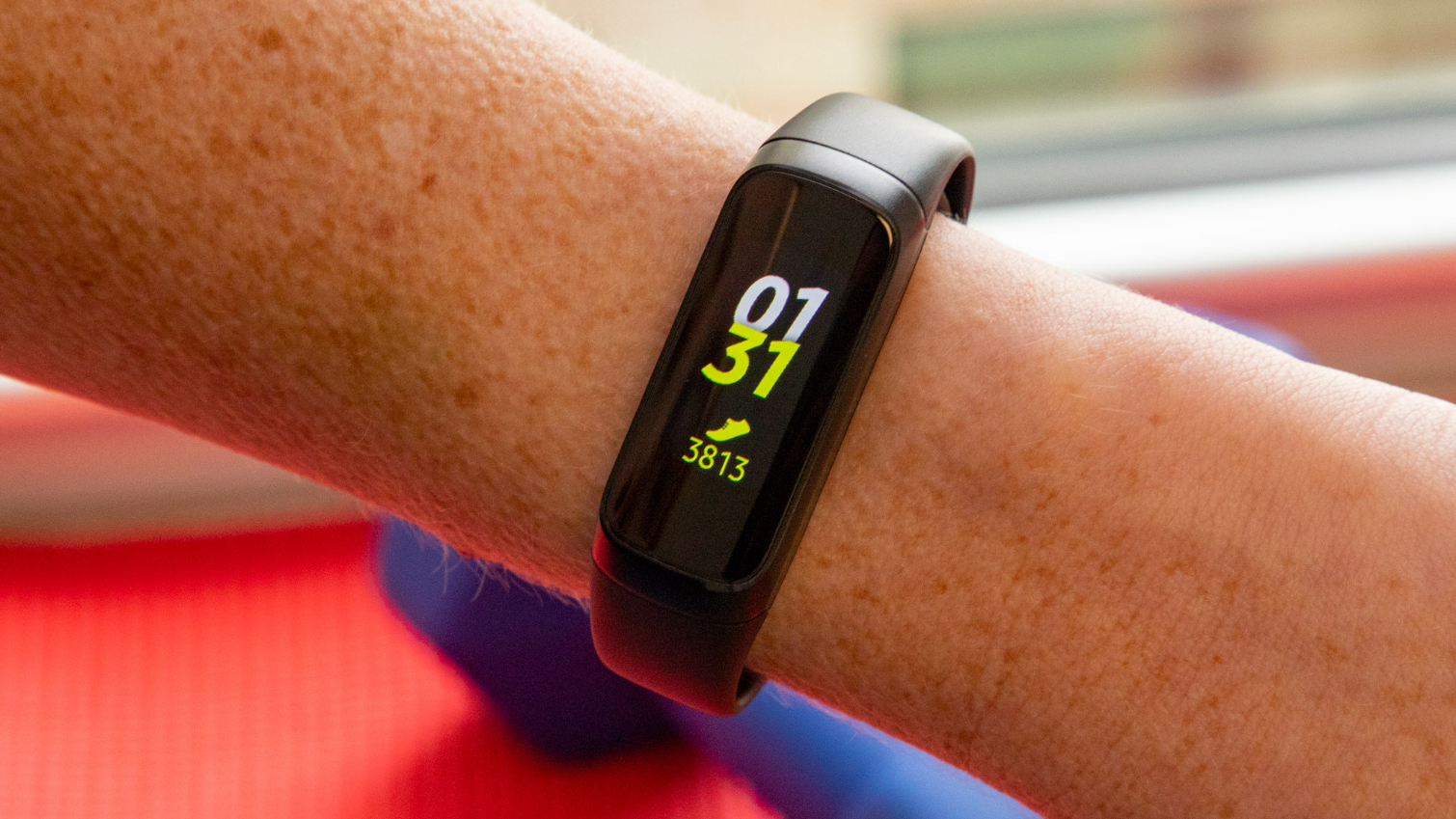
Samsung’s sporty smartwatch, the Galaxy Watch Active, hogged the spotlight when Samsung announced additions to its suite of wearables earlier this year. But the company also refreshed its fitness tracker lineup with the $100 Galaxy Fit, on sale Friday (June 14), and the more basic Galaxy Fit e, which isn’t coming to the States.
Samsung priced its fitness band attractively, but is the Fit a worthy competitor for the current fitness champ, Fitbit? I’ve been using the Galaxy Fit for a couple of days, and there’s a lot to like.
Design
The Galaxy Fit is one of the most comfortable fitness trackers around. At just 23 grams, it’s incredibly light, and I didn’t feel it at all when I slept. Other fitness trackers have woken me in the night, because I could feel an object on my wrist. With the Galaxy Fit, I didn’t have that problem.
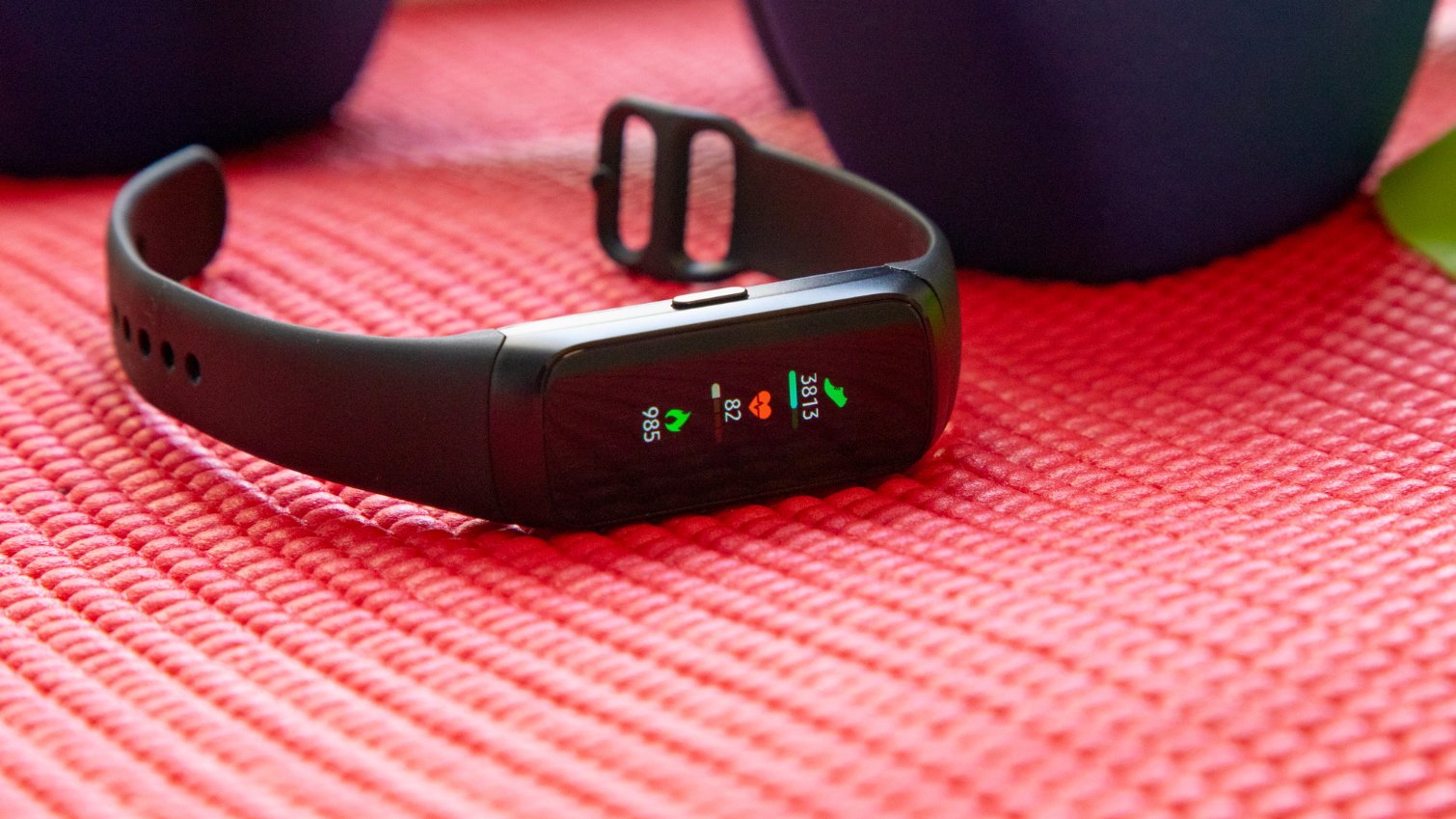
The Fit is also fairly thin, at least compared to rival trackers like the Fitbit Charge 3. It definitely still looks like a fitness tracker, though — there’s just no getting around the fact that you have a rectangular display on your wrist.
The Fit’s full-color display measures 0.95 inches, but a chunky bezel surrounds the screen, which makes the body of the Fit extend past my wristbone (which is on the petite side). For those with normal- to larger-sized wrists, this won’t be an issue.
The only issue I had was with the Fit’s band. Instead of a traditional buckle, Samsung chose an Apple Watch Sport strap-like design, where the silicone band slides through an opening that allows you to adjust the fit. Adjusting the pin to either remove the band or tighten it took some maneuvering because of the design. Otherwise, the band is easy to use.
Get instant access to breaking news, the hottest reviews, great deals and helpful tips.
Setup
I used Samsung’s Galaxy S10+ with the Galaxy Fit, but you can pair the device to any iOS or Android phone. You’ll need the Samsung Wearable and Samsung Health apps, available in Apple’s App Store or Google Play, to set up the Fit, customize its functions and view your activity dashboard.
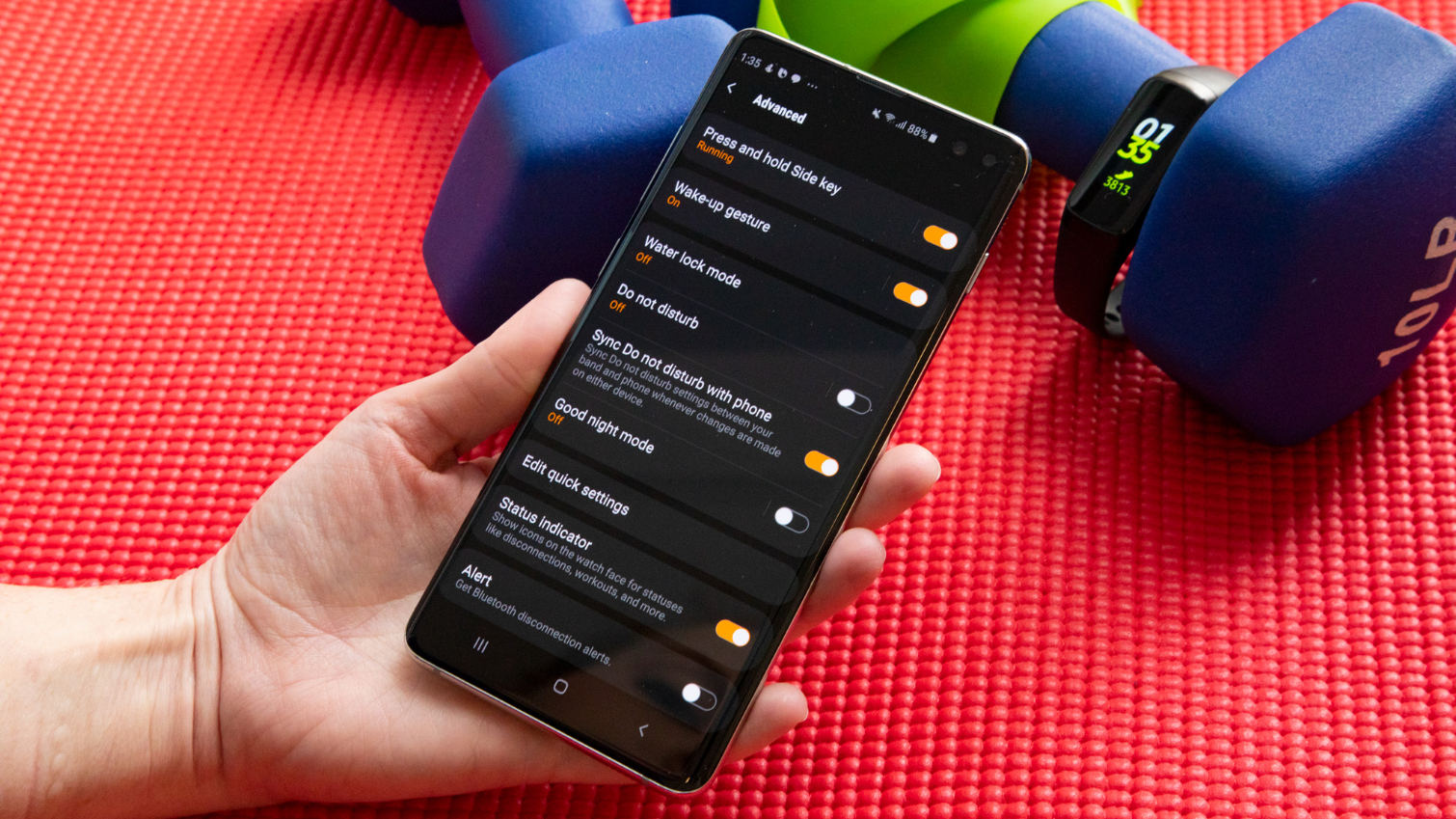
After you launch the Samsung Wearable app, choose Galaxy Fit from the product list. Make sure Bluetooth is enabled on your phone, and the two devices should pair almost instantly. Then personalize everything, including custom quick responses to messages, the order of the widgets you can see on the band’s display and which workout is activated with a press of the Fit’s side button.
Then you can see your activity and sleep stats in the Samsung Health app, which is well-organized but pretty basic and light on insights. I prefer Fitbit’s app for a more well-rounded fitness dashboard.
Fitness
I’ve only worked out once with the Galaxy Fit, but the band was a capable running companion, despite not having GPS on-board nor the ability to pick up a GPS signal from a paired phone. (Fitbit’s $100 Inspire HR offers connected GPS for using your phone to more accurately track outdoor workouts.)
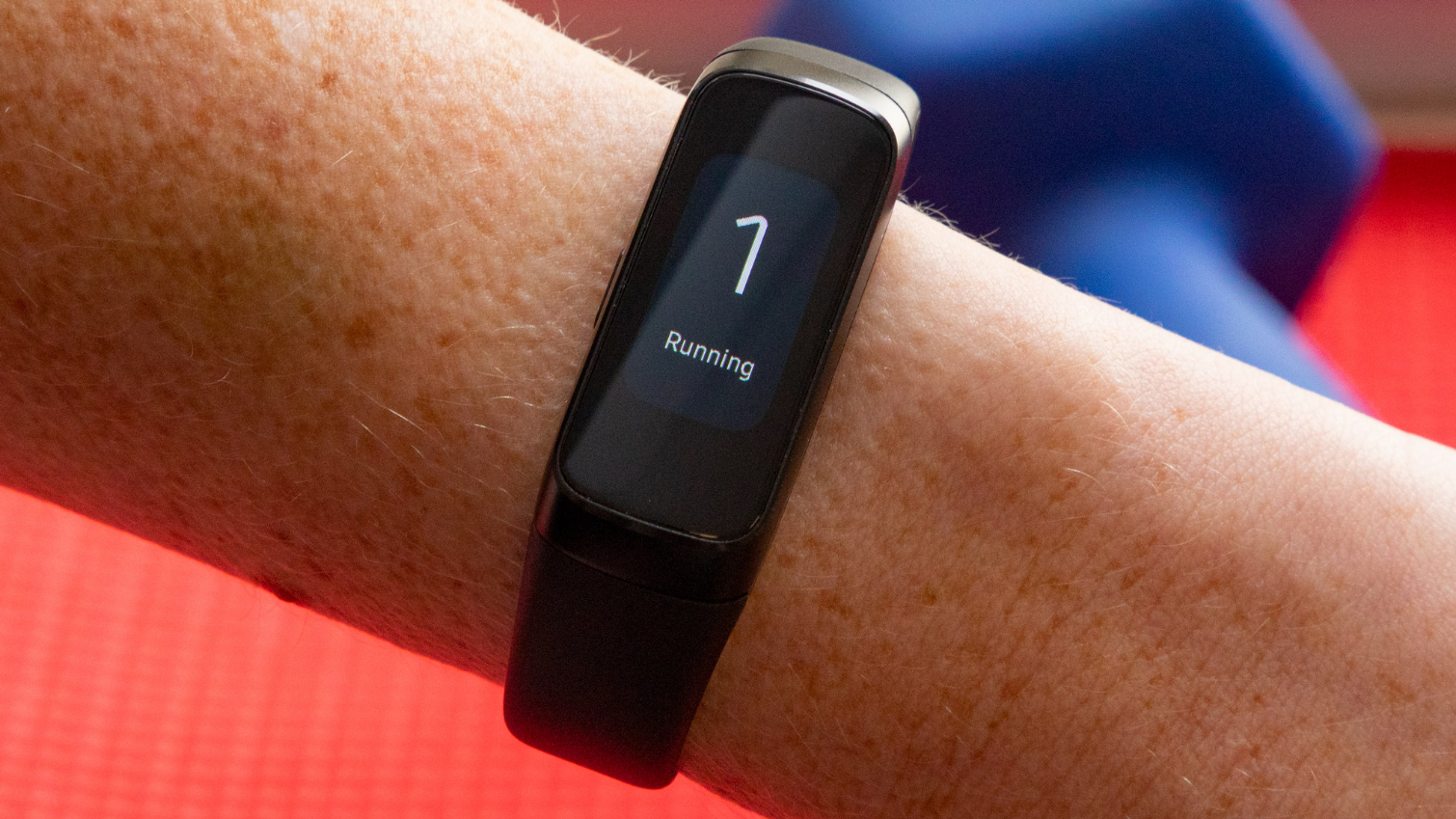
Launching a workout is easy: Either swipe to the left to see a list of preinstalled exercises, or press the side button for a second to immediately launch a running workout. You can change the side button’s shortcut to a different exercise if you’re not a runner. You can also choose from 90 types of workouts to add to the device in the Samsung Wearable app.
I ran a familiar route, about 3.15 miles, which the Fit logged as 3.23 miles. The next day, I ran the same route — the Fit tracked it as 3.15 miles exactly.
The Fit’s full-color display gets pretty bright, even at 60%, which was useful as I ran at dusk. You can only see two stats at a time on the Fit’s small display, but you can easily swipe through four screens to see additional metrics. The device shows time elapsed, pace per mile, heart rate, miles per hour and steps per minute. My favorite part: auto-pause was enabled by default, so I didn’t lose valuable time while stopped at a light waiting for my turn to run across the street.
I’ll test the Fit with additional workouts to see how versatile of a fitness tracker this band is and update this review with the results.
Sleep
So far I don’t love the Galaxy Fit’s sleep-tracking feature. The tracker counts every minute spent in bed as part of your total sleep time, even though I was reading before falling asleep and laid in bed checking email and the news when I woke up.

Then there was a mysterious hour in the middle of the night where the tracker has no data on me whatsoever. I don’t remember being awake at all, but the Fit’s dashboard separated my sleep into two separate chunks. I’ll spend more time with the tracker to see if its sleep-tracking becomes more accurate as it gets to know my routines, but so far, I’m unimpressed.
Battery Life
I’ve been using the Fit for about a day and a half, using the device to track my sleep, steps and two 3-mile runs. The device was down to 87%, which means I could probably squeeze out more than a week on a charge. Samsung promises up to seven days of battery life, which seems accurate. The Inspire HR is supposed to last five days, but in my experience it was closer to three.
It would be really cool if you could charge up the Fit from a Galaxy S10, but that’s not possible. Samsung included a proprietary charging dock with the Fit, which needs to be plugged into a USB port. This is a missed opportunity for Samsung to make its devices more connected (and to bring people further into its ecosystem).
Outlook
The Galaxy Fit offers solid fitness-tracking in a lightweight, comfortable package. And Samsung’s newest fitness tracker undercuts Fitbit’s Charge 3, our current top pick for best fitness tracker, on price. That band is usually $150, but can often be found at a discount for $120.
Samsung stripped features like GPS and on-board music storage from the Fit’s predecessors, the Gear Fit 2 and Fit 2 Pro, in favor of a slimmer design, longer battery life and a lower price. Do those trade-offs make the Galaxy Fit a better buy? Stay tuned for our full review.
Credit: Tom's Guide
Caitlin is a Senior editor for Gizmodo. She has also worked on Tom's Guide, Macworld, PCWorld and the Las Vegas Review-Journal. When she's not testing out the latest devices, you can find her running around the streets of Los Angeles, putting in morning miles or searching for the best tacos.
